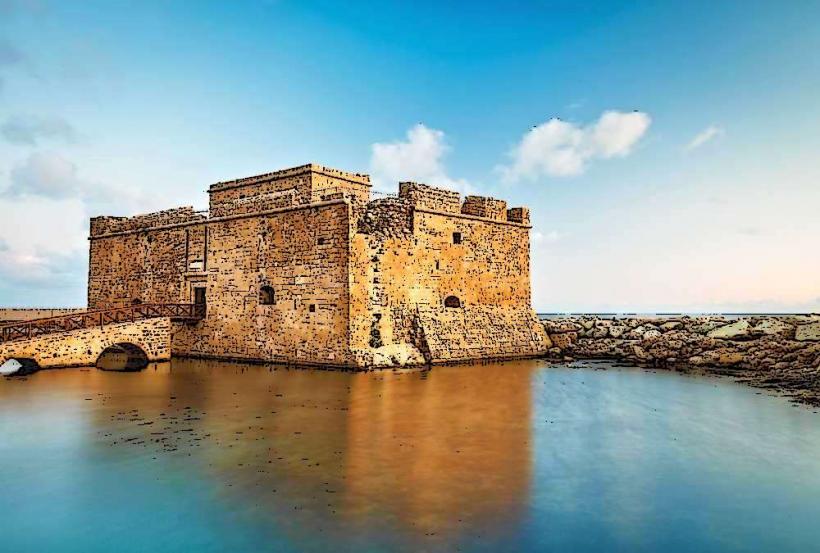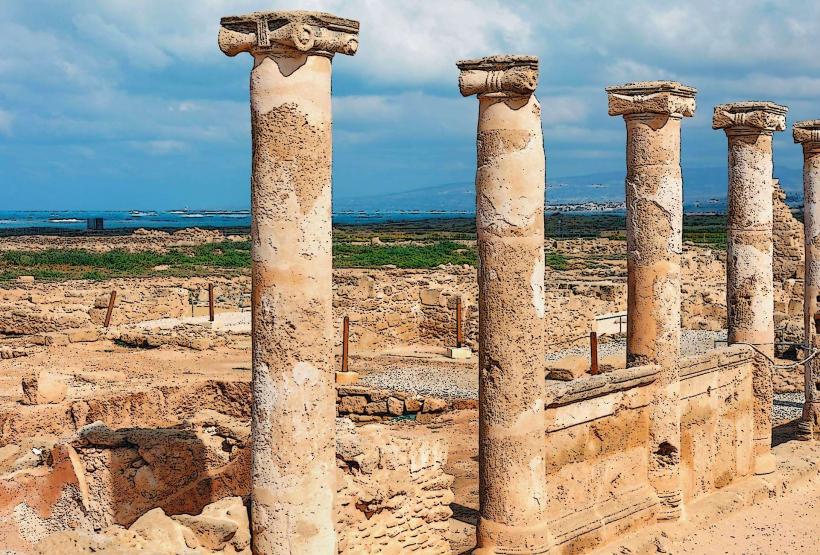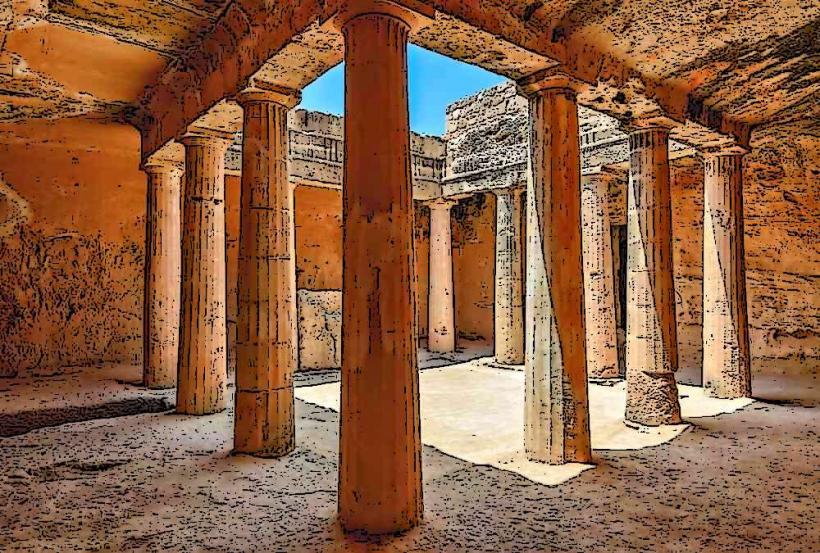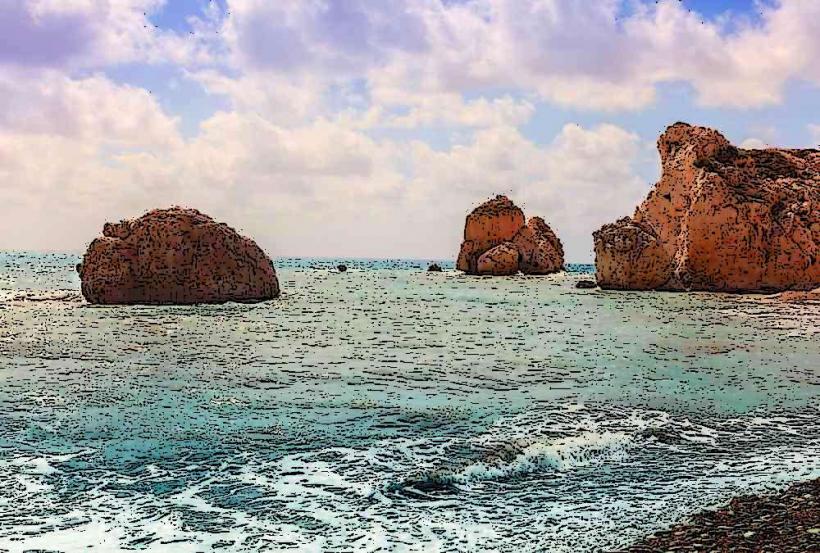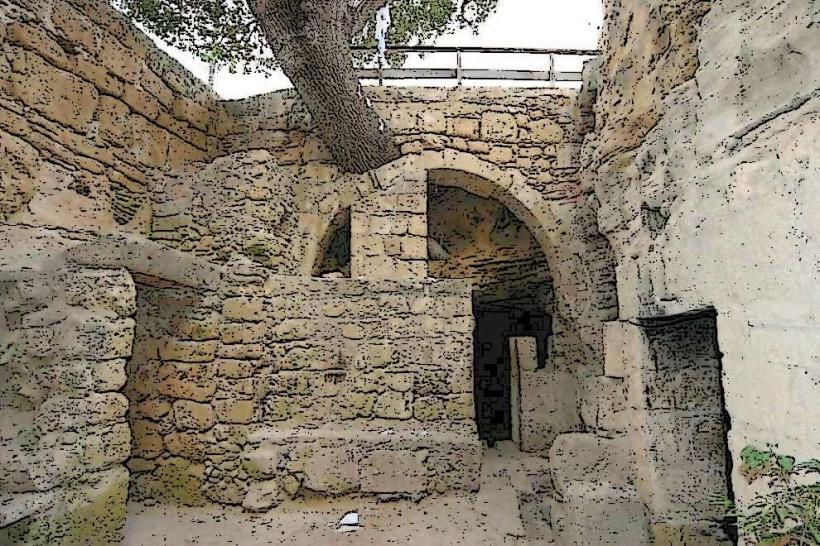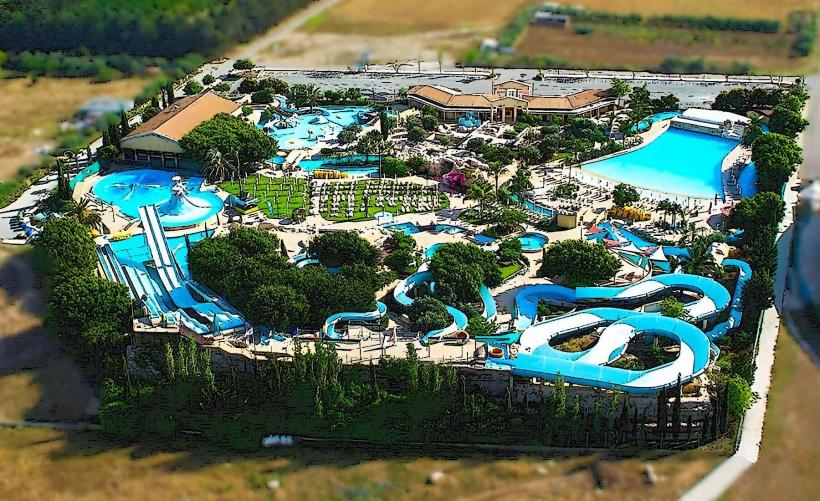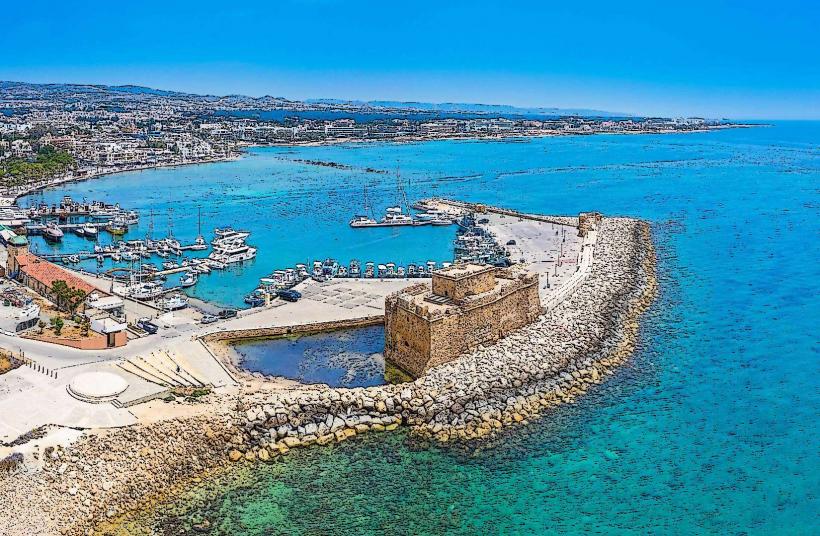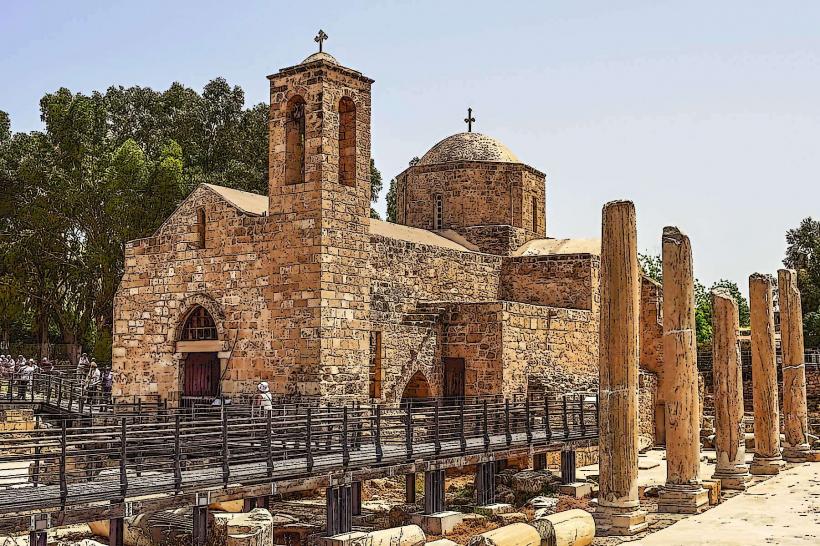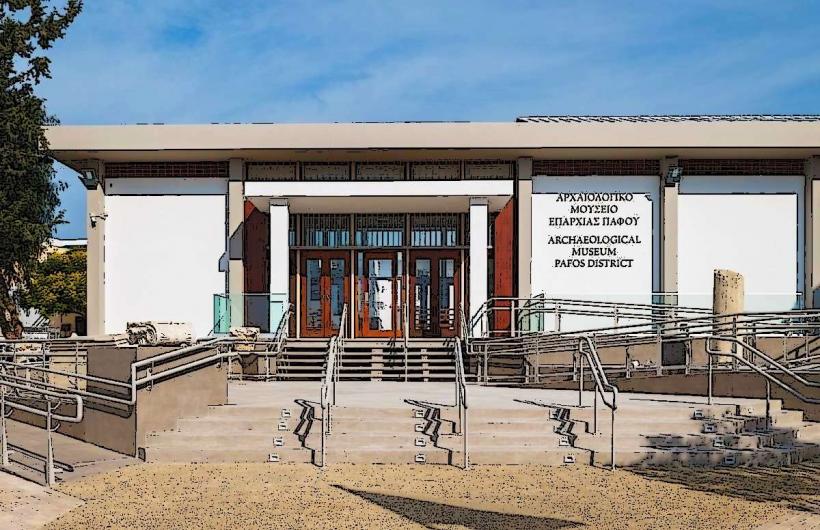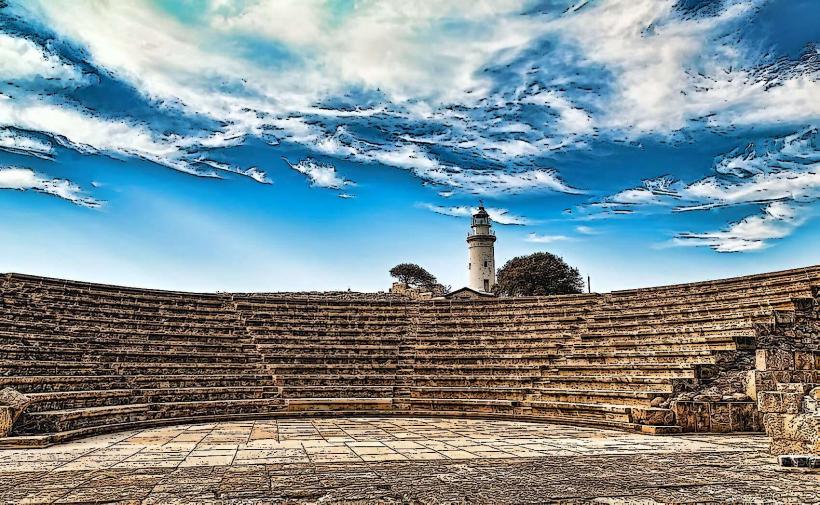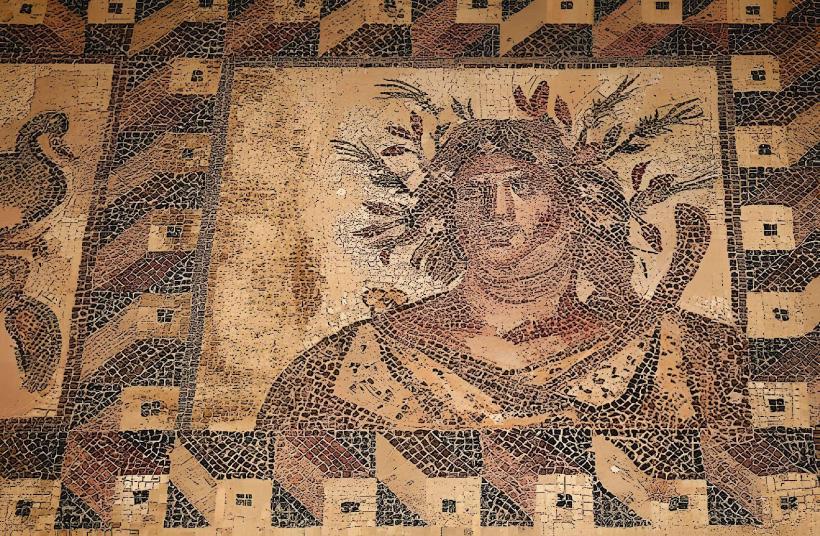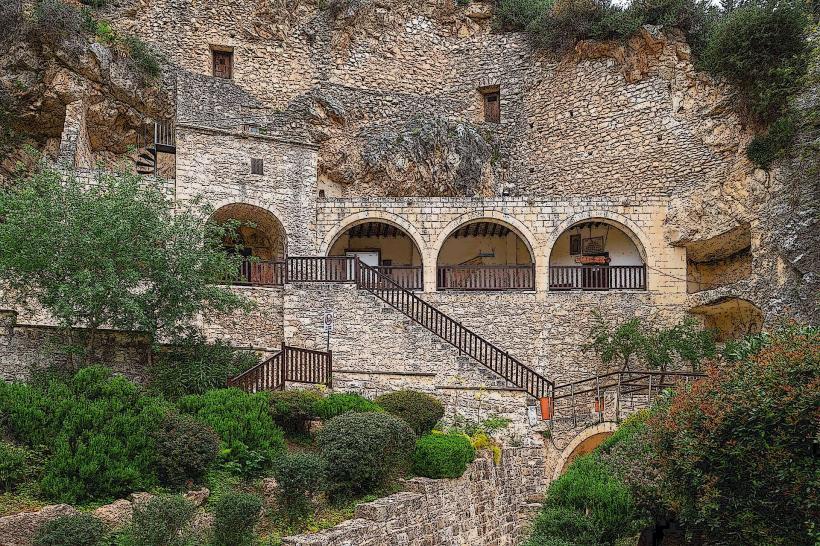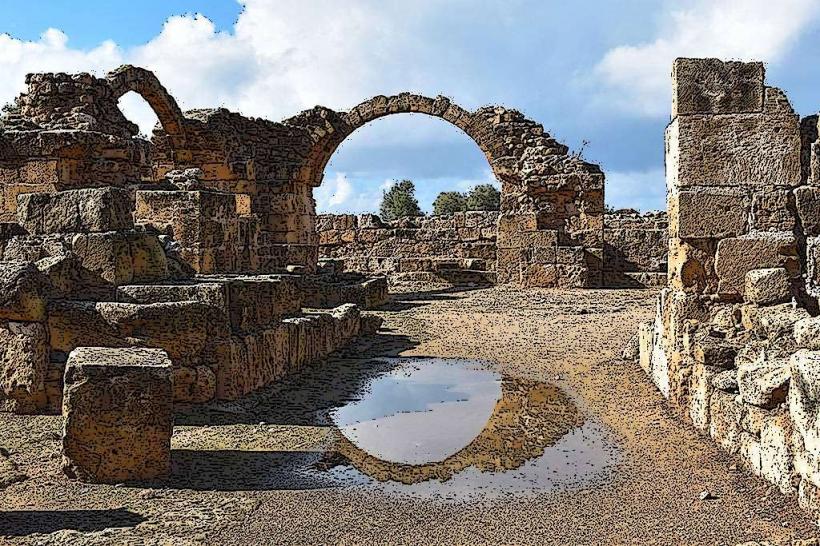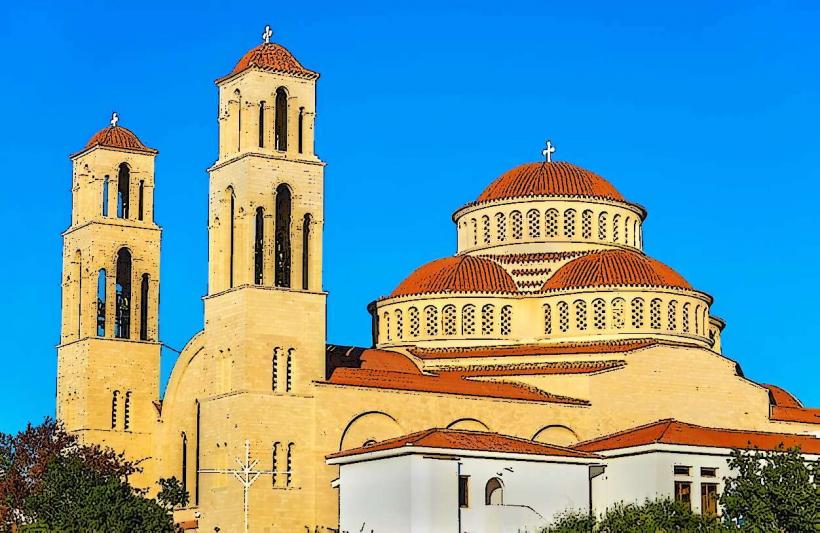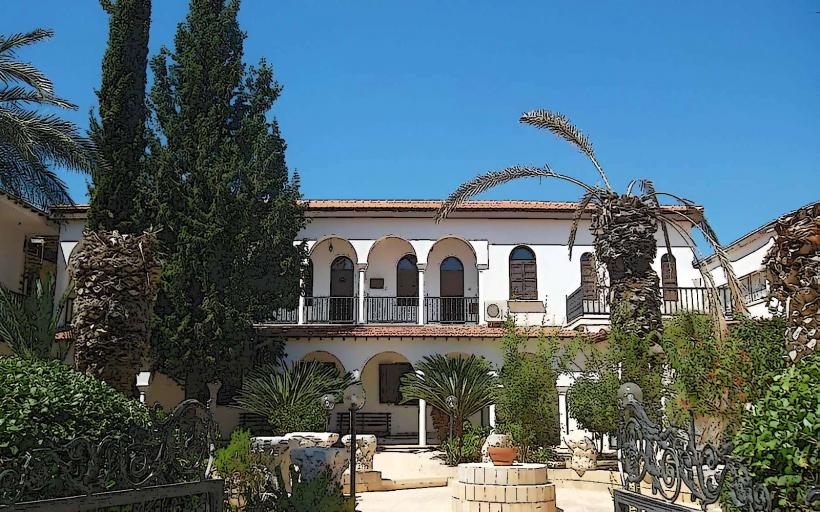Information
Landmark: House of DionysosCity: Paphos
Country: Cyprus
Continent: Europe
The House of Dionysos is one of the most notable and well-preserved archaeological sites in the Paphos Archaeological Park in Cyprus. It is renowned for its stunning mosaics, which depict scenes from Greek mythology, particularly those related to Dionysos, the Greek god of wine, revelry, and fertility. The house itself is believed to have been a luxurious Roman villa dating back to the 2nd century CE, reflecting the wealth and cultural importance of its original inhabitants.
Key Features of the House of Dionysos
Mosaics:
- The House of Dionysos is famous for its mosaics, some of the finest examples of Roman mosaic artistry in the Mediterranean. These mosaics cover large sections of the floor and are intricately designed with vibrant colors and detailed depictions from Greek mythology.
- The mosaic floors are remarkable for their complexity and preservation. They often feature scenes of Dionysos, his followers (the maenads and satyrs), and various mythological events associated with the god. These mosaics are significant not only for their artistry but also for the insights they provide into the religious and cultural practices of the time.
- Some of the most famous mosaics from the house depict Dionysos riding a leopard, Dionysos with satyrs, and the god transforming pirates into dolphins, among other mythological stories.
Architectural Layout:
- The House of Dionysos is a large villa built around a central courtyard, typical of Roman villas. The villa is organized with several rooms arranged around the courtyard, including dining rooms (known as tricliniums), living rooms, and possibly bedrooms. The mosaics were installed in the floors of these rooms, giving the house an elegant and luxurious atmosphere.
- The villa's layout and design showcase Roman domestic architecture, with the use of open spaces, elaborate decoration, and attention to comfort and aesthetics. The house was likely intended for a wealthy Roman family, as suggested by the grandeur of the mosaics and the scale of the villa.
The Mythological Themes:
- The primary theme of the mosaics revolves around Dionysos, reflecting his importance in the Greco-Roman world as the god of wine, theater, and ecstasy. His depictions are often intertwined with those of his followers: the maenads (female devotees) and satyrs (half-human, half-goat creatures), both of whom were key in his mythological stories.
- The mosaics also feature scenes from the myth of Dionysos and the Pirates, in which the god transforms a group of pirates who attempt to kidnap him into dolphins. This mythological story was a popular theme in Roman and Greek art, symbolizing the god’s power and divine nature.
Significance of Dionysos:
- Dionysos was a central figure in both Greek and Roman cultures, representing not just the physical pleasure of wine and revelry, but also themes of transformation, chaos, and renewal. His role as the god of fertility, nature, and the theater made him a beloved and widely worshiped figure in the ancient world.
- The presence of Dionysos-themed mosaics in a private home suggests that the owners of the House of Dionysos were not only wealthy but also culturally engaged and participated in the religious and social life of the time.
Cultural Context:
- The House of Dionysos dates back to the Roman period, when Cyprus was under Roman control. During this time, Paphos was an important administrative and cultural center, and wealthy Romans would have sought to decorate their homes with images that reflected their social status and their connection to the gods.
- The mosaics at the House of Dionysos are an important representation of Roman decorative art and domestic life, as well as a reflection of the religious and mythological world of the time.
Excavation and Preservation:
- The House of Dionysos was discovered during excavations in the 1960s, and since then, significant efforts have been made to preserve the site and its mosaics. Today, the house is open to the public and forms part of the Paphos Archaeological Park, allowing visitors to explore the remains and view the stunning mosaics up close.
- Much of the villa’s architecture and mosaics are well-preserved, making it one of the most impressive and visited ancient sites in Cyprus.
Visitor Experience
- Mosaics on Display: Visitors to the site can walk through the rooms of the villa, viewing the mosaics that have been carefully preserved. The level of detail and the vibrant colors of the mosaics are striking and give a vivid sense of what the villa might have looked like when it was inhabited.
- Museum Artifacts: Many of the artifacts found in the House of Dionysos, including pottery, statues, and fragments of the mosaics, are displayed in the nearby Paphos Archaeological Museum. This allows visitors to gain a deeper understanding of the historical context and significance of the site.
- Interactive Experience: The mosaics themselves tell a story of ancient life, mythology, and religion, and an audio guide or guided tour can help visitors appreciate the historical and cultural context of the house and its occupants.
Conclusion
The House of Dionysos is one of the most remarkable and culturally rich sites in Paphos Archaeological Park. Its elaborate mosaics and well-preserved architecture provide a unique glimpse into Roman life, religion, and art. The house’s connection to the worship of Dionysos, as well as its stunning artistic decorations, make it an essential destination for anyone interested in ancient Greek and Roman culture.

